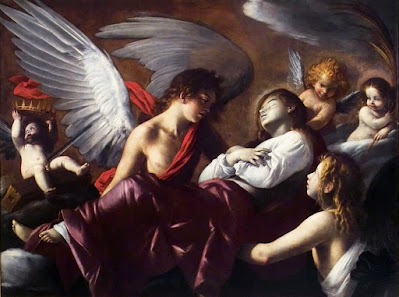 |
| Giovanni Baglione Judith with the Head of Holofernes ca. 1610-15 oil on canvas private collection |
 |
| Giovanni Baglione Ecstasy of St Francis 1601 oil on canvas Art Institute of Chicago |
 |
| Giovanni Baglione Assumption of St Catherine of Alexandria ca. 1603 oil on panel private collection |
 |
| Giovanni Baglione Angel appearing to St Joseph ca. 1599 oil on canvas private collection |
 |
| Giovanni Baglione Emperor Constantine donating precious vessels to the Lateran Basilica ca. 1597-1601 fresco Basilica di San Giovanni in Laterano, Rome |
 |
| Giovanni Baglione Apparition of the Holy Face ca. 1597-1601 fresco Basilica di San Giovanni in Laterano, Rome |
 |
| Giovanni Baglione Justice and Charity Embracing 1622 oil on canvas Royal Collection, Great Britain |
 |
| Giovanni Baglione The Muse Thalia 1620 oil on canvas Musée des Beaux-Arts d'Arras |
 |
| Giovanni Baglione The Muse Erato 1620 oil on canvas Musée des Beaux-Arts d'Arras |
 |
| Giovanni Baglione The Muse Terpsichore 1620 oil on canvas Musée des Beaux-Arts d'Arras |
 |
| Giovanni Baglione Venus whipped by Love ca. 1600-1615 oil on canvas Fondazione Zeri, Rome |
 |
| Giovanni Baglione Divine Love subduing Earthly Love ca. 1602 oil on canvas Palazzo Barberini, Rome |
 |
| Giovanni Baglione Divine Love subduing Earthly Love ca. 1602 oil on canvas Gemäldegalerie, Berlin |
 |
| Giovanni Baglione Ascension of Christ ca. 1603 oil on canvas (bozzetto for altarpiece in Chiesa del Gesù, Rome) Musée du Louvre |
 |
| Giovanni Baglione St John the Baptist wreathing the Lamb ca. 1630-40 oil on canvas Royal Collection, Great Britain |
Giovanni Baglione – Roman painter, best remembered as the implacable enemy of Caravaggio and the author of the Vite de' Pittori, Scultori et Architetti, dal Pontificato di Gregorio XIII dal 1572 in fino a' tempi di Papa Urbino Ottavo nel 1642, probably the most reliable source for the biographies of late 16th- and early 17th-century Roman artists. He also wrote a guide to Roman churches, Le Nuove Chiese di Roma (1639). The son of a Florentine resident of Rome, Baglione first painted in a Late Mannerist idiom influenced by the followers of Barocci. Around 1600, however, his style changed radically under the influence of Caravaggio, which did not, however, prevent Caravaggio and his friends, notably Orazio Gentileschi, from circulating long and coarse derisory poems about him and his work. In 1603 Baglione brought a suit for defamation of character against them, claiming that Caravaggio was jealous of him because he, Baglione, had received a commission for the Ascension of Christ in the church of the Gesù. Baglione was strongly criticized for a painting of Divine Love subduing Earthly Love executed shortly after the trial to rival a Victorious Earthly Love by Caravaggio; significantly, the picture was once attributed to Caravaggio himself. During the pontificate of Paul V Baglione received numerous commissions in Rome and in the papal states of Umbria and the Marches. In these years Caravaggio's influence diminished, to be replaced by that of Annibale Carracci and his Bolognese followers. . . . Vacillating between progressive trends, Baglione absorbed none of them fully; the quality of his work declined rapidly after 1630.
– Erika Langmuir and Norbert Lynton, Yale Dictionary of Art and Artists (2000)